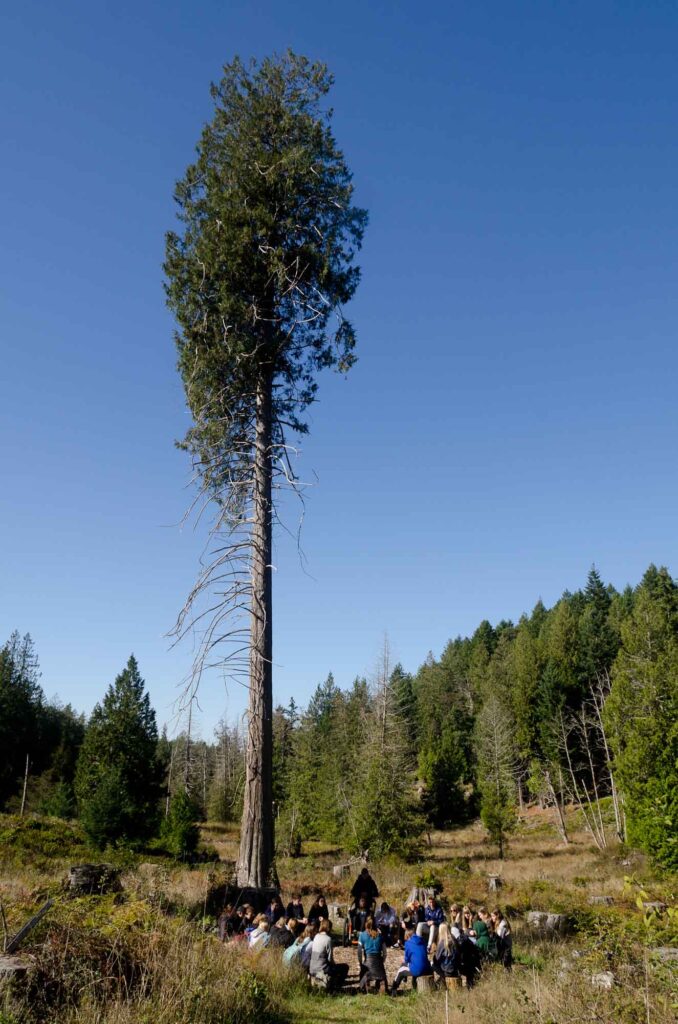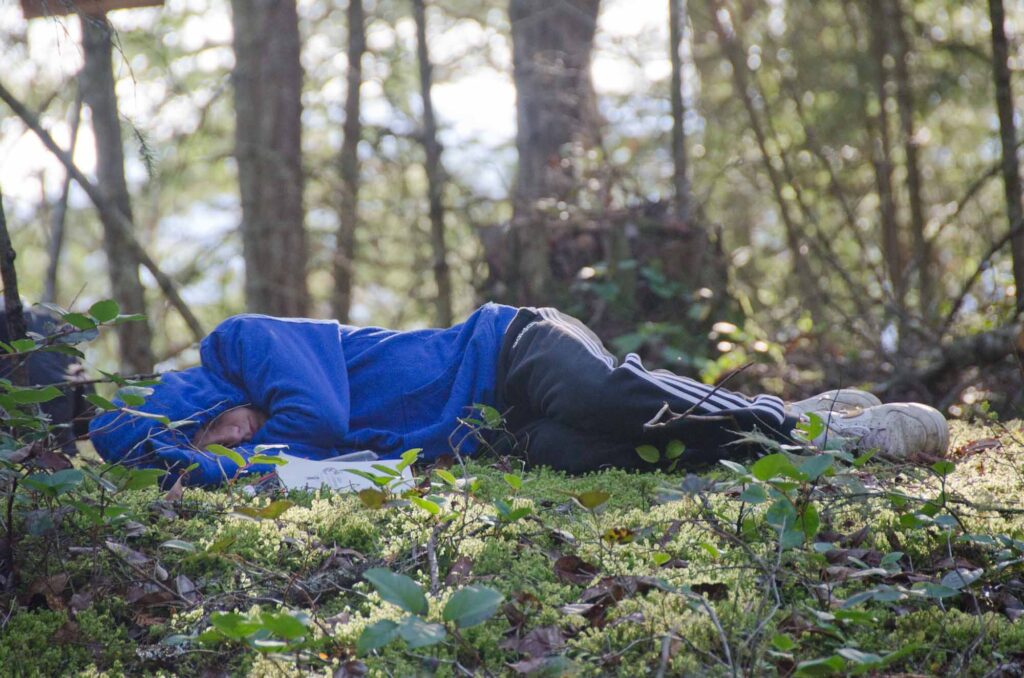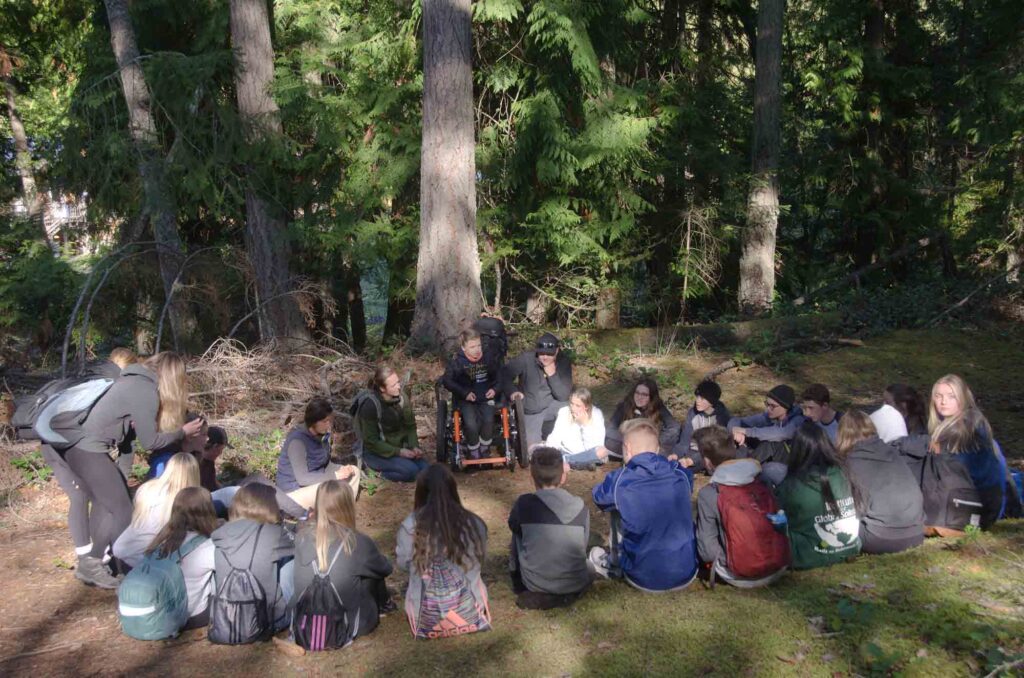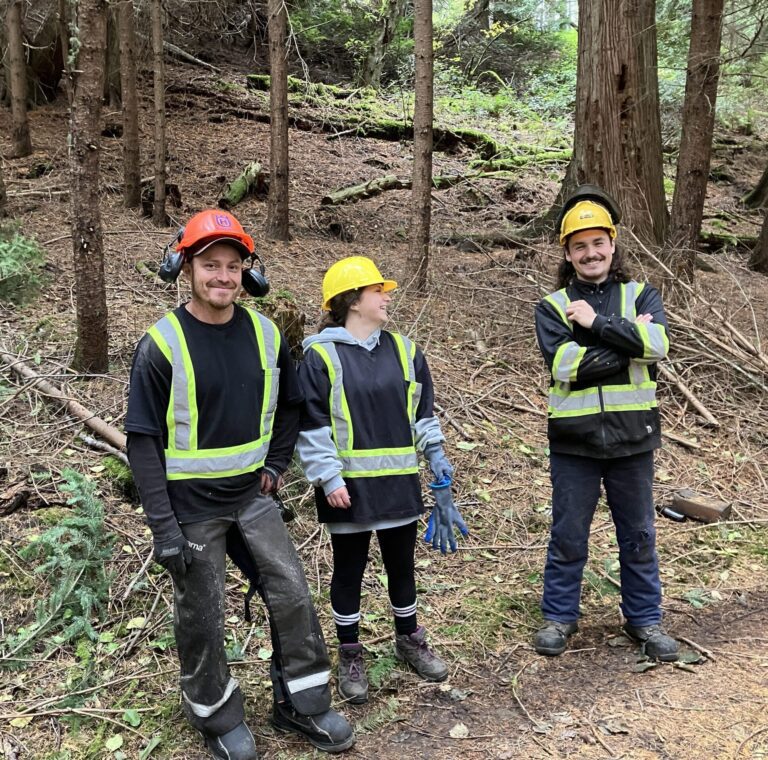On October 9th and 10th, we had some fabulous days with 50 kids from Claremont Secondary School – Institute for Global Solutions.
The kids spent two days at the Millard Learning Centre, participating in the Conservancy’s new Native Plant Inspirations education program and the Coastal Forest of Pebble Beach program.
We started day one with a welcome gathering under a Mother-Cedar in the Nuts’a’maat Forage Forest, a native plant garden and restoration site at the Millard Learning Centre. The Forage Forest is the central learning space for the Native Plant Inspirations program and teaches kids the concept of “Nuts’a’maat” – to work together with one heart and one mind.
We all voiced our appreciation for the land, which exists respectfully within the unceded and asserted territory of the Penelakut (PEN-L-AH-KIT), Hwiltsum (HULL-IT-SUM), Lamalcha (LA-MUL-CHA) and other Hul’q’umi’num (HULL-CUM-EE-NUM) speaking peoples and Sencoten (SEN-CHAU-THEN) speaking peoples. As well as the ceded territory of the Tsawwassen (SA-WA-SEN) First Nation.
During the day, we exchanged knowledge of native plants, their properties and techniques to cultivate them. The kids experienced the first frost in the year – brrrr, and we decided to go on a little hike to harvest tea ingredients on our beautiful Millard Learning Centre and to get warm. While hiking we learned about harvesting etiquettes and how to identify plant species. The hike was a very good tool to repeat knowledge of the plants we have cultivated and learned from during the day.
The peak of the program was the senses activity, where we use smell, taste, touch and hearing in our natural environment – kids did taste some Yerba Buena, smelled Sheep Sorrel and touched Oregon Grape leafs, and many others. To train our ears and ‘melt’ into the biodiverse surroundings of our gorgeous ridge ecosystem, everyone had time to meditate!
At the end of the day, we enjoyed some tea we infused together and filled own teabags with the ingredients we harvested to take home to family and friends.
Overall, this was a delightful day embedded in joy, science, art and a feeling of unity!
Thanks to Claremont Secondary School, for spending another couple of days with us!





